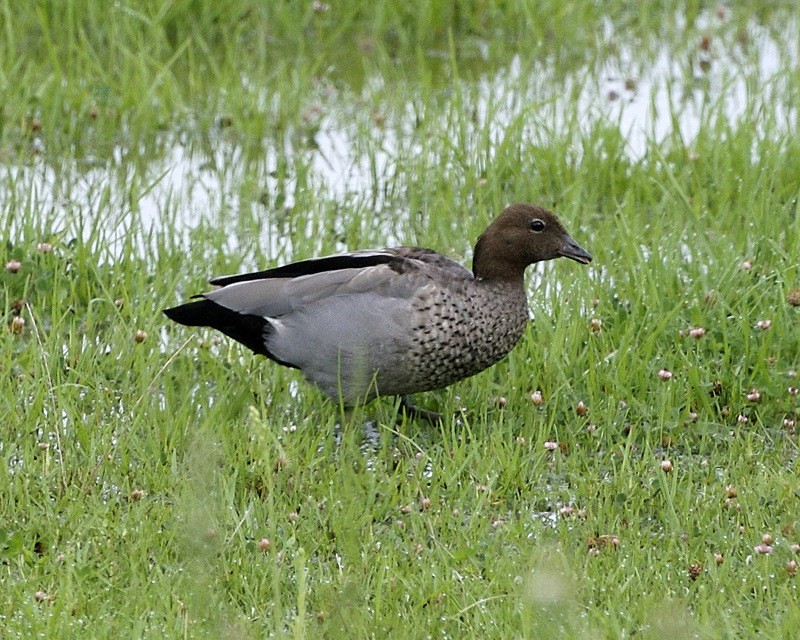Maned Duck
A species of Maned Duck, Also known as Maned Goose Scientific name : Chenonetta jubata Genus : Maned Duck
Maned Duck, A species of Maned Duck
Also known as:
Maned Goose
Botanical name: Chenonetta jubata
Genus: Maned Duck
Content
Description People often ask General Info
 Photo By Lip Kee , used under CC-BY-SA-2.0 /Cropped and compressed from original
Photo By Lip Kee , used under CC-BY-SA-2.0 /Cropped and compressed from original Description
This 45–51 cm duck looks like a small goose, and feeds mostly by grazing in flocks. The male is grey with a dark brown head and mottled breast. The female has white stripes above and below the eye and mottled underparts. Both sexes have grey wings with black primaries and a white speculum. Juveniles are similar to adult females, but lighter and with a more streaky breast. 
Size
45 - 51 cm
Life Expectancy
15 years
Nest Placement
Tree
Feeding Habits
Maned Duck primarily consumes grasses, grains, clover, herbs, and occasionally insects. Maned Duck forages by dabbling in shallow waters and roaming grasslands and crops, seldom venturing into open waters. Its diet is distinguished by a preference for terrestrial feeding.
Habitat
Maned Duck predominantly dwells in environments like grasslands, open woodlands, and freshwater marshes, favoring regions with ample grazing opportunities. They adapt well to urban parks and ponds and require mature trees for nesting, but avoid dense woods. Maned Duck also uses saline wetlands and may inhabit upstream river areas and altitudes up to 1800 meters.
Dite type
Herbivorous
People often ask
General Info
Feeding Habits
Bird food type
Distribution Area
The Australian wood duck is widespread in Australia, including Tasmania. 